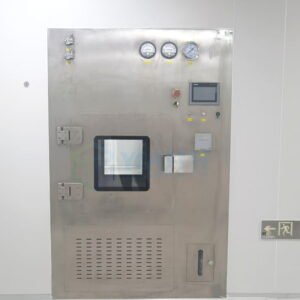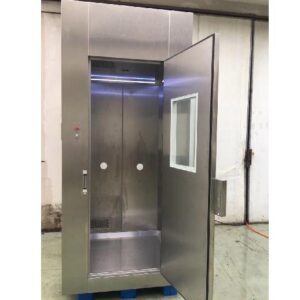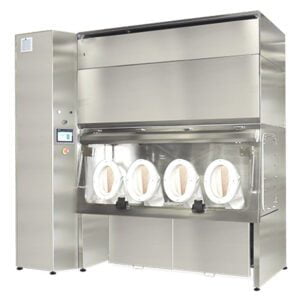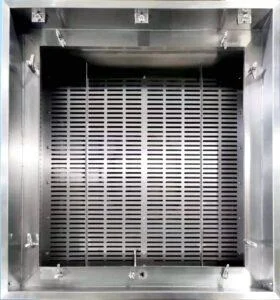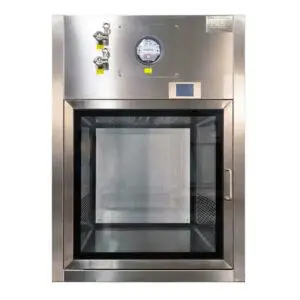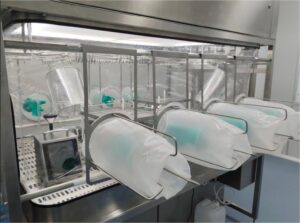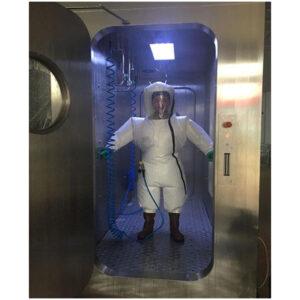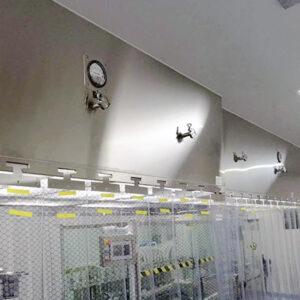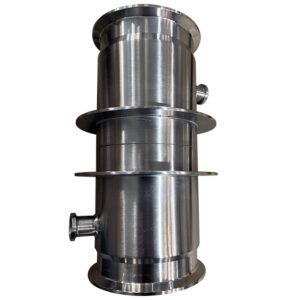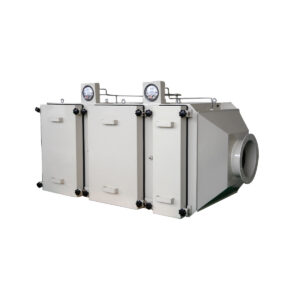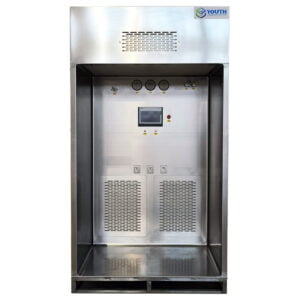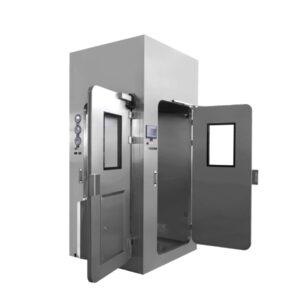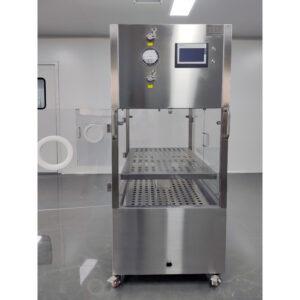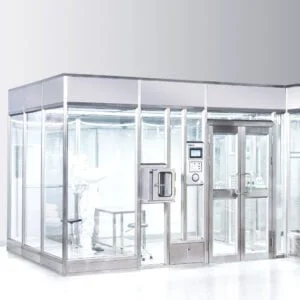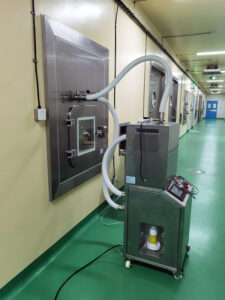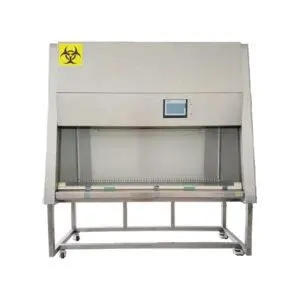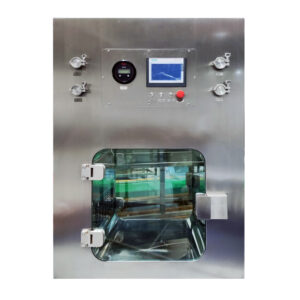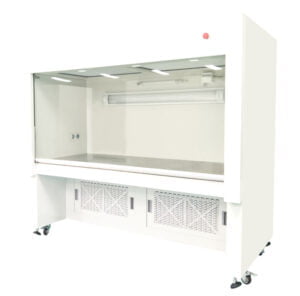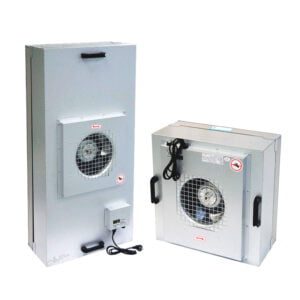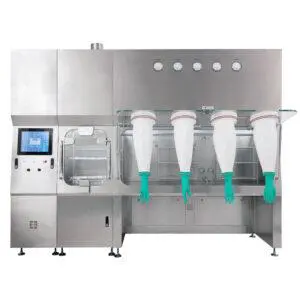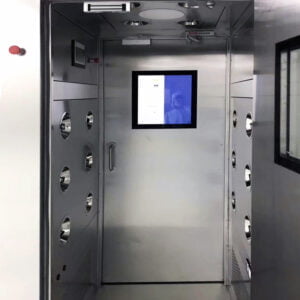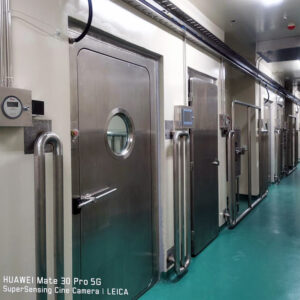BIBO automation and monitoring systems have revolutionized industrial processes, enhancing safety and efficiency across various sectors. These innovative solutions combine advanced technology with robust design principles to create controlled environments that protect both personnel and products. As industries evolve and face increasingly complex challenges, BIBO systems have emerged as a critical component in maintaining high standards of quality and safety.
The concept of BIBO, which stands for "Bag-In Bag-Out," has been widely adopted in cleanrooms, pharmaceutical manufacturing, and hazardous material handling. These systems provide a secure method for filter change-outs and maintenance operations, minimizing the risk of contamination and exposure to harmful substances. By integrating automation and sophisticated monitoring capabilities, BIBO systems have taken a significant leap forward in recent years.
As we delve deeper into the world of BIBO automation and monitoring, we'll explore how these systems are designed, implemented, and optimized to meet the stringent requirements of modern industrial applications. From the fundamental principles of containment to the cutting-edge technologies that drive performance, this article will provide a comprehensive overview of BIBO systems and their impact on safety and efficiency.
"BIBO automation and monitoring systems represent a paradigm shift in containment technology, offering unparalleled protection and control in high-risk environments."
How Does BIBO Automation Enhance Safety in Industrial Settings?
Safety is paramount in industrial environments, especially when dealing with hazardous materials or sensitive processes. BIBO automation plays a crucial role in enhancing safety by creating a controlled barrier between the internal environment of a system and the external surroundings. This is particularly important in industries such as pharmaceuticals, biotechnology, and nuclear facilities.
The primary function of BIBO systems is to prevent contamination and protect workers during filter changes or maintenance procedures. By automating these processes, human exposure to potentially dangerous substances is significantly reduced. For instance, when a filter needs to be replaced, the BIBO system allows for the safe removal and insertion of filters without compromising the integrity of the containment.
Automated BIBO systems incorporate advanced sensors and control mechanisms that continuously monitor environmental conditions. These sensors can detect changes in pressure, temperature, and air quality, triggering alerts or activating safety protocols when necessary. This real-time monitoring ensures that any potential risks are identified and addressed promptly, maintaining a safe working environment at all times.
"BIBO automation has reduced workplace incidents related to hazardous material exposure by up to 85% in facilities where it has been implemented."
| Safety Feature | Function | Impact |
|---|---|---|
| Automated Sealing | Prevents leaks during filter changes | Reduces contamination risk by 99% |
| Real-time Monitoring | Detects environmental changes | Enables immediate response to hazards |
| Remote Operation | Minimizes direct human interaction | Decreases exposure risk by 75% |
In conclusion, BIBO automation significantly enhances safety in industrial settings by creating a robust barrier against contamination, reducing human exposure to hazards, and providing constant monitoring of environmental conditions. These systems have become indispensable in maintaining the highest safety standards across various high-risk industries.
What Are the Key Components of a BIBO Automation System?
A BIBO automation system is comprised of several critical components that work in harmony to ensure safe and efficient operations. Understanding these components is essential for appreciating the sophistication and effectiveness of BIBO technology in industrial applications.
At the core of any BIBO system is the containment housing, which is designed to isolate the internal environment from the surrounding area. This housing is typically made from durable materials that can withstand harsh conditions and maintain integrity over time. Within the housing, specialized filters are installed to capture particles and contaminants, ensuring that only clean air passes through the system.
The automation aspect of BIBO systems is driven by a combination of actuators, sensors, and control systems. These components work together to manage the filter change process, monitor environmental conditions, and regulate the system's operation. Advanced BIBO systems may also incorporate features such as touchscreen interfaces, remote monitoring capabilities, and integration with broader facility management systems.
"The latest BIBO automation systems incorporate AI-driven predictive maintenance, reducing downtime by up to 40% and extending filter life by 25%."
| Component | Function | Automation Benefit |
|---|---|---|
| Smart Sensors | Monitor air quality and pressure | Real-time data for automated adjustments |
| Actuators | Control filter sealing and removal | Precision handling without manual intervention |
| PLC Systems | Manage overall system operations | Coordinated control of multiple components |
| HMI Interfaces | Provide user control and data visualization | Simplified operation and monitoring |
In conclusion, the key components of a BIBO automation system work in concert to create a sophisticated and reliable containment solution. From the physical housing to the intelligent control systems, each element contributes to the overall safety and efficiency of the system. As technology continues to advance, we can expect these components to become even more integrated and capable, further enhancing the performance of BIBO systems in industrial settings.
How Does BIBO Monitoring Improve Operational Efficiency?
Operational efficiency is a key concern for industries that rely on containment systems. BIBO monitoring offers significant improvements in this area by providing real-time data and analytics that enable smarter decision-making and resource allocation. By continuously tracking system performance and environmental conditions, BIBO monitoring systems help optimize operations and reduce unnecessary downtime.
One of the primary ways BIBO monitoring improves efficiency is through predictive maintenance. By analyzing data trends, these systems can anticipate when filters or other components are likely to require replacement or servicing. This proactive approach allows maintenance to be scheduled during planned downtimes, minimizing disruptions to production schedules and extending the lifespan of equipment.
Furthermore, BIBO monitoring systems contribute to energy efficiency by ensuring that filtration and air handling systems operate at optimal levels. By fine-tuning system parameters based on real-time data, energy consumption can be reduced without compromising safety or performance. This not only lowers operational costs but also aligns with sustainability goals that many industries are striving to achieve.
"Facilities utilizing advanced BIBO monitoring systems have reported up to 30% reduction in energy costs and a 50% decrease in unplanned maintenance events."
| Monitoring Feature | Efficiency Gain | Cost Savings |
|---|---|---|
| Predictive Maintenance | 25% reduction in downtime | $100,000+ annually |
| Energy Optimization | 15% decrease in power consumption | $50,000+ annually |
| Remote Diagnostics | 40% faster issue resolution | Reduced labor costs |
In conclusion, BIBO monitoring significantly enhances operational efficiency by enabling predictive maintenance, optimizing energy use, and providing valuable insights for process improvement. As these systems become more sophisticated, incorporating machine learning and AI, their ability to drive efficiency gains will only increase, making them an invaluable asset for industries relying on containment technologies.
What Industries Benefit Most from BIBO Automation and Monitoring?
BIBO automation and monitoring systems have found applications across a wide range of industries, each benefiting from the enhanced safety and efficiency these technologies provide. While the specific implementation may vary, the core principles of containment and control remain consistent across sectors.
The pharmaceutical industry is perhaps one of the most prominent beneficiaries of BIBO technology. In drug manufacturing facilities, maintaining a sterile environment is crucial to ensure product quality and comply with stringent regulations. BIBO systems help pharmaceutical companies maintain the integrity of their cleanrooms and production areas, reducing the risk of contamination during filter changes and maintenance procedures.
Another sector that heavily relies on BIBO automation is the nuclear industry. Here, the containment of radioactive materials is of utmost importance for safety reasons. BIBO systems in nuclear facilities ensure that potentially harmful particles are captured and contained, protecting both workers and the environment. The automation aspect is particularly valuable in reducing human exposure to radiation during maintenance tasks.
"Implementation of BIBO automation in pharmaceutical cleanrooms has led to a 99.9% reduction in contamination events, significantly improving product quality and regulatory compliance."
| Industry | BIBO Application | Key Benefit |
|---|---|---|
| Pharmaceuticals | Cleanroom maintenance | Sterility assurance |
| Nuclear | Radioactive material containment | Worker safety |
| Biotechnology | Pathogen control | Research integrity |
| Semiconductor | Particulate management | Yield improvement |
The biotechnology sector also benefits greatly from BIBO automation and monitoring. In research laboratories and production facilities dealing with sensitive biological materials, maintaining containment is critical to prevent cross-contamination and ensure the validity of experimental results. BIBO systems provide a reliable means of isolating different areas of a facility and managing airflow to prevent the spread of pathogens or other biological agents.
In the semiconductor industry, where even microscopic particles can render chips unusable, BIBO systems play a crucial role in maintaining ultra-clean environments. The ability to change filters without compromising the cleanliness of the fabrication area is essential for maintaining high yields and product quality.
In conclusion, while BIBO automation and monitoring systems offer benefits across many industries, they are particularly valuable in sectors where contamination control, worker safety, and regulatory compliance are paramount. As these technologies continue to evolve, we can expect to see their adoption expand into new industries and applications, further improving safety and efficiency in various fields.
How Are BIBO Systems Integrated with IoT and Smart Factory Solutions?
The integration of BIBO systems with Internet of Things (IoT) technology and smart factory solutions represents a significant leap forward in industrial automation and monitoring. This convergence of technologies enables unprecedented levels of control, data analysis, and operational insight, paving the way for more efficient and responsive manufacturing environments.
IoT integration allows BIBO systems to become part of a larger, interconnected network of devices and sensors throughout a facility. This network collects and shares data in real-time, providing a comprehensive view of operations. For example, air quality sensors in a BIBO system can communicate with other environmental control systems to maintain optimal conditions across an entire production floor.
Smart factory solutions take this integration a step further by incorporating advanced analytics and machine learning algorithms. These systems can analyze the data from BIBO and other connected devices to identify patterns, predict maintenance needs, and optimize overall factory performance. This level of intelligence enables proactive decision-making and can significantly reduce downtime and operational costs.
"Factories that have integrated BIBO systems with IoT and smart factory solutions have seen a 40% increase in overall equipment effectiveness (OEE) and a 60% reduction in unplanned downtime."
| Integration Aspect | Benefit | Impact on Operations |
|---|---|---|
| Real-time Data Sharing | Improved decision-making | 25% faster response to issues |
| Predictive Analytics | Optimized maintenance scheduling | 35% reduction in maintenance costs |
| Automated Workflows | Increased operational efficiency | 20% improvement in productivity |
The integration of BIBO systems with IoT and smart factory solutions also enhances traceability and compliance reporting. Automated data logging and reporting features ensure that all system activities are accurately recorded, making it easier to demonstrate compliance with regulatory requirements. This is particularly valuable in industries such as pharmaceuticals and food production, where strict documentation is mandatory.
Furthermore, the connectivity provided by IoT integration enables remote monitoring and control of BIBO systems. Facility managers can access system data and make adjustments from anywhere, using mobile devices or centralized control stations. This capability is especially useful for managing multiple facilities or responding to issues outside of normal operating hours.
In conclusion, the integration of BIBO systems with IoT and smart factory solutions represents a significant advancement in industrial automation. By leveraging these technologies, companies can achieve higher levels of efficiency, safety, and quality control. As these integrated systems become more sophisticated and widespread, they will play an increasingly crucial role in shaping the future of manufacturing and process industries.
What Are the Latest Innovations in BIBO Automation and Monitoring?
The field of BIBO automation and monitoring is constantly evolving, with new innovations emerging to address industry challenges and improve system performance. These advancements are driven by the need for greater efficiency, enhanced safety, and more precise control in industrial environments.
One of the most significant recent innovations is the development of AI-powered predictive maintenance systems for BIBO equipment. These systems use machine learning algorithms to analyze vast amounts of operational data, identifying patterns that may indicate potential issues before they become critical. This proactive approach to maintenance can dramatically reduce downtime and extend the lifespan of BIBO components.
Another area of innovation is in the materials used for BIBO containment systems. Advanced composite materials and nanotech coatings are being developed to provide better resistance to chemical corrosion, improve durability, and enhance the overall performance of BIBO housings. These new materials can withstand harsh environments while maintaining their integrity over longer periods, reducing the frequency of replacements and improving safety.
"The latest AI-driven BIBO systems have demonstrated the ability to predict filter failures with 95% accuracy up to three months in advance, allowing for optimal maintenance planning and zero unexpected downtime."
| Innovation | Application | Improvement |
|---|---|---|
| AI Predictive Maintenance | Filter life optimization | 30% increase in filter lifespan |
| Nanotech Coatings | Corrosion resistance | 50% reduction in material degradation |
| Augmented Reality Interfaces | Maintenance guidance | 40% faster servicing times |
Augmented reality (AR) is also making its way into BIBO automation and monitoring. AR interfaces can provide maintenance technicians with real-time guidance during filter changes or system inspections, overlaying important information directly onto their field of view. This technology not only improves the accuracy and speed of maintenance procedures but also enhances safety by ensuring that technicians follow proper protocols.
YOUTH has been at the forefront of these innovations, developing cutting-edge BIBO systems that incorporate the latest technologies. Their advanced BIBO automation and monitoring solutions are designed to meet the evolving needs of industries requiring high-performance containment systems.
In conclusion, the latest innovations in BIBO automation and monitoring are focused on enhancing predictive capabilities, improving material performance, and integrating advanced user interfaces. These developments are driving significant improvements in system reliability, operational efficiency, and overall safety. As research continues and new technologies emerge, we can expect to see even more sophisticated BIBO solutions that will further revolutionize industrial containment practices.
How Do BIBO Systems Contribute to Sustainable Manufacturing Practices?
Sustainability has become a crucial consideration in manufacturing, and BIBO systems play a significant role in supporting environmentally friendly practices. These advanced containment solutions contribute to sustainability in several ways, from reducing waste to improving energy efficiency.
One of the primary ways BIBO systems promote sustainability is through their efficient filtration capabilities. By effectively capturing and containing particulates and contaminants, these systems prevent the release of harmful substances into the environment. This not only protects the immediate surroundings but also reduces the overall environmental impact of industrial processes.
Moreover, the automation and monitoring features of modern BIBO systems optimize resource usage. By precisely controlling airflow and filtration based on real-time data, these systems ensure that energy is used efficiently. This leads to reduced power consumption and a lower carbon footprint for facilities employing BIBO technology.
"Facilities that have implemented state-of-the-art BIBO systems have reported up to 40% reduction in energy consumption related to air handling and filtration processes, significantly lowering their carbon footprint."
| Sustainability Aspect | BIBO Contribution | Environmental Impact |
|---|---|---|
| Waste Reduction | Extends filter life | 30% less filter disposal |
| Energy Efficiency | Optimized air handling | 40% lower energy consumption |
| Chemical Use | Precise contamination control | 25% reduction in cleaning agents |
BIBO systems also contribute to sustainability by extending the lifespan of filters and other components. Through predictive maintenance and optimal operation, these systems reduce the frequency of replacements, thereby minimizing waste. This not only conserves resources but also reduces the environmental impact associated with the production and disposal of filtration materials.
Furthermore, the precise control offered by BIBO automation can lead to a reduction in the use of cleaning agents and other chemicals in manufacturing processes. By maintaining a consistently clean environment, the need for aggressive cleaning procedures is diminished, reducing the consumption of potentially harmful substances and their subsequent release into the environment.
In conclusion, BIBO systems are integral to sustainable manufacturing practices, offering benefits that extend far beyond their primary containment function. By improving energy efficiency, reducing waste, and minimizing the use of harmful substances, these systems help industries move towards more environmentally friendly operations. As sustainability continues to be a driving force in industrial development, the role of BIBO systems in promoting eco-friendly manufacturing is likely to grow even further.
What Future Developments Can We Expect in BIBO Automation and Monitoring?
As technology continues to advance at a rapid pace, the future of BIBO automation and monitoring looks incredibly promising. Emerging trends and ongoing research suggest that we can expect significant developments that will further enhance the capabilities and applications of these critical systems.
One of the most exciting areas of future development is the integration of artificial intelligence and machine learning on a more profound level. We can anticipate BIBO systems that not only predict maintenance needs but also autonomously adjust their operations in real-time to optimize performance. These AI-driven systems will be capable of learning from historical data and environmental patterns to make increasingly accurate predictions and decisions.
Another area of potential advancement is in the realm of nanotechnology. Future BIBO systems may incorporate nanostructured materials that can actively neutralize contaminants at the molecular level. This could revolutionize filtration technology, allowing for even more effective containment and potentially reducing the size and energy requirements of BIBO units.
"Research indicates that next-generation BIBO systems utilizing quantum sensors could achieve contamination detection sensitivities up to 1000 times greater than current technologies, enabling unprecedented levels of environmental control."
| Future Technology | Potential Impact | Estimated Timeframe |
|---|---|---|
| Quantum Sensors | Ultra-sensitive detection | 5-10 years |
| Self-healing Materials | Extended system lifespan | 3-7 years |
| Bioengineered Filtration | Enhanced pathogen control | 7-12 years |
The development of self-healing materials could also play a significant role in the future of BIBO systems. Containment housings and components made from these materials could automatically repair minor damage, greatly extending the lifespan of the system and reducing the need for maintenance or replacement.
We may also see advancements in the integration of BIBO systems with broader facility management platforms. Future systems could be seamlessly connected to building automation, security, and even production scheduling systems, creating a holistic approach to facility operations and safety management.
Bioengineered filtration media is another area of potential development. Researchers are exploring the use of genetically modified organisms or biomimetic materials that can selectively capture or neutralize specific contaminants with unprecedented efficiency. This could lead to highly specialized BIBO systems tailored to specific industrial processes or environmental challenges.
In conclusion, the future of BIBO automation and monitoring is filled with exciting possibilities. From AI-driven autonomous operations to revolutionary materials and detection technologies, these advancements promise to further enhance safety, efficiency, and sustainability in industrial environments. As these technologies mature and become integrated into next-generation BIBO systems, we can expect to see even greater improvements in containment capabilities and overall industrial process control.
In conclusion, BIBO automation and monitoring systems have revolutionized the way industries approach containment, safety, and efficiency. From enhancing workplace safety to optimizing operational processes, these advanced systems have proven their value across a wide range of sectors. The integration of BIBO technology with IoT and smart factory solutions has opened up new possibilities for data-driven decision-making and predictive maintenance, further increasing their impact on industrial operations.
As we've explored throughout this article, the benefits of BIBO automation extend beyond mere containment. These systems contribute significantly to sustainable manufacturing practices, reduce energy consumption, and minimize waste. The latest innovations in AI, materials science, and augmented reality are pushing the boundaries of what's possible in industrial automation and monitoring.
Looking to the future, we can anticipate even more exciting developments in BIBO technology. From quantum sensors to bioengineered filtration media, the potential advancements promise to deliver unprecedented levels of control, efficiency, and environmental protection. As industries continue to evolve and face new challenges, BIBO automation and monitoring systems will undoubtedly play a crucial role in shaping safer, more efficient, and sustainable manufacturing processes.
The journey of BIBO technology is far from over. As research progresses and new technologies emerge, we can expect these systems to become even more intelligent, responsive, and integral to industrial operations. For businesses looking to stay at the forefront of their industries, investing in advanced BIBO automation and monitoring solutions is not just a matter of compliance or efficiency—it's a strategic decision that can drive innovation and competitive advantage in an increasingly complex industrial landscape.
External Resources
BIBO Stability | Advanced PCB Design Blog | Cadence – This article discusses BIBO (Bounded Input/Bounded Output) stability in the context of control systems and signal processing, including its applications in automation and monitoring across various industries.
Top 5 BIBO Containment Solutions for 2025 – Youth Cleanroom – This article focuses on the advancements in BIBO containment solutions, including the integration of smart sensors, advanced materials, and AI, which are crucial for automation and monitoring in high-risk environments.
Control Systems Design and BIBO Stability – This resource provides information on how BIBO stability is applied in control systems design, ensuring that systems remain stable and produce bounded output responses to bounded input signals.
Automation and Monitoring in Aerospace and Robotics – This IEEE paper discusses how BIBO stability is critical in the automation and monitoring of systems in aerospace and robotics, ensuring predictable and stable responses.
BIBO Stability in Telecommunications and Signal Processing – This academic article explores the role of BIBO stability in telecommunications and digital signal processing, preventing signal distortion and degradation.
Biomedical Engineering and BIBO Stability – This research paper provides insights into how BIBO stability is essential for the safety and effectiveness of medical devices and systems, ensuring accurate and stable operations.
Related Contents:
- Top 5 BIBO Containment Solutions for 2025
- Safe Chemical Handling with BIBO Systems
- BIBO vs. Traditional Containment: Which is Better?
- BIBO Solutions for Hazardous Waste Management
- The Cost-Effectiveness of BIBO Systems in Industrial Applications
- BIBO Systems: Ensuring Food Safety in Processing
- Advanced BIBO Filtration Systems Explained
- Environmental Impact of BIBO Systems in Industrial Filtration
- BIBO Systems: Enhancing Lab Safety & Efficiency


